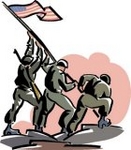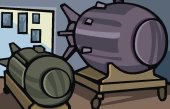
Worksheets and No Prep Teaching Resources
Reading Comprehension Worksheets
World War II

World War II
 Worksheets and No Prep Teaching Resources Reading Comprehension Worksheets World War II |
 World War II |
| edHelper's suggested reading level: | grades 8 to 10 | |
| Flesch-Kincaid grade level: | 7.93 |
|
The Manhattan Project
By Mary Lynn Bushong |

|
 1 One of the big fears at the start of World War II was that the Nazis were working to develop an atomic bomb. Albert Einstein sent a letter to President Roosevelt encouraging him to fund research into nuclear fission for weapons to stop the Nazis.
1 One of the big fears at the start of World War II was that the Nazis were working to develop an atomic bomb. Albert Einstein sent a letter to President Roosevelt encouraging him to fund research into nuclear fission for weapons to stop the Nazis. |
Create Weekly Reading Books
Prepare for an entire week at once! |
| Leave your feedback on The Manhattan Project (use this link if you found an error in the story) |
 |
World War II
|
 |
High School Reading Comprehensions and High School Reading Lessons
|
 |
Social Studies
|
 |
United States
|
|
|
|
|
 | Fifty States Theme Unit |
 |
Document Based Activities |